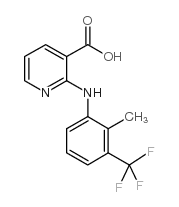Drug-induced mild therapeutic hypothermia obtained by administration of a transient receptor potential vanilloid type 1 agonist.
Keld Fosgerau, Uno J Weber, Jacob W Gotfredsen, Magdalena Jayatissa, Carsten Buus, Niels B Kristensen, Mogens Vestergaard, Peter Teschendorf, Andreas Schneider, Philip Hansen, Jakob Raunsø, Lars Køber, Christian Torp-Pedersen, Charlotte Videbaek
文献索引:BMC Cardiovasc. Disord. 10 , 51, (2010)
全文:HTML全文
摘要
The use of mechanical/physical devices for applying mild therapeutic hypothermia is the only proven neuroprotective treatment for survivors of out of hospital cardiac arrest. However, this type of therapy is cumbersome and associated with several side-effects. We investigated the feasibility of using a transient receptor potential vanilloid type 1 (TRPV1) agonist for obtaining drug-induced sustainable mild hypothermia.First, we screened a heterogeneous group of TRPV1 agonists and secondly we tested the hypothermic properties of a selected candidate by dose-response studies. Finally we tested the hypothermic properties in a large animal. The screening was in conscious rats, the dose-response experiments in conscious rats and in cynomologus monkeys, and the finally we tested the hypothermic properties in conscious young cattle (calves with a body weight as an adult human). The investigated TRPV1 agonists were administered by continuous intravenous infusion.Screening: Dihydrocapsaicin (DHC), a component of chili pepper, displayed a desirable hypothermic profile with regards to the duration, depth and control in conscious rats. Dose-response experiments: In both rats and cynomologus monkeys DHC caused a dose-dependent and immediate decrease in body temperature. Thus in rats, infusion of DHC at doses of 0.125, 0.25, 0.50, and 0.75 mg/kg/h caused a maximal ΔT (°C) as compared to vehicle control of -0.9, -1.5, -2.0, and -4.2 within approximately 1 hour until the 6 hour infusion was stopped. Finally, in calves the intravenous infusion of DHC was able to maintain mild hypothermia with ΔT > -3°C for more than 12 hours.Our data support the hypothesis that infusion of dihydrocapsaicin is a candidate for testing as a primary or adjunct method of inducing and maintaining therapeutic hypothermia.
相关化合物
| 结构式 | 名称/CAS号 | 分子式 | 全部文献 |
|---|---|---|---|
 |
二氢辣椒素
CAS:19408-84-5 |
C18H29NO3 | |
 |
氟尼辛葡甲胺
CAS:38677-85-9 |
C14H11F3N2O2 |
|
Chemical genetics reveals a complex functional ground state ...
2007-05-01 [Nat. Chem. Biol. 3(5) , 268-273, (2007)] |
|
Inhibition by capsaicin and its related vanilloids of compou...
2013-03-14 [Life Sci. 92(6-7) , 368-78, (2013)] |
|
Optimization and validation of liquid chromatography and hea...
2012-02-23 [J. Pharm. Biomed. Anal. 60 , 51-8, (2012)] |
|
Increased susceptibility to cardiovascular effects of dihydr...
2010-01-01 [BMC Cardiovasc. Disord. 10 , 39, (2010)] |
|
Acute effects of dihydrocapsaicin and capsaicin on the distr...
2009-06-01 [J. Nutr. Sci. Vitaminol. 55(3) , 282-7, (2009)] |